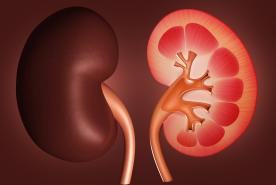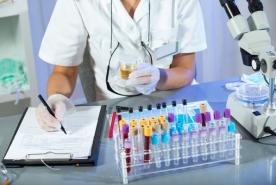Last Updated: December 06, 2024
Medically reviewed by NKF Patient Education Team
A urinalysis tests pee to detect issues like infections, kidney disease, and diabetes for early diagnosis and treatment.
Types
Urinalysis is done using a thin, plastic stick with strips of chemicals on it. It is dipped into plastic cup containing a recently produced urine sample. The strips change color if a substance is present at a level that is above normal. Some of the things a dipstick examination can check for include:
- Acidity (pH) is a measure of the amount of acid in the urine. A pH that is above normal may be a sign of kidney stones, urinary infections, kidney problems, or other disorders.
- Protein is an important building block in the body. Everyone has protein in their blood. But it should only be in your blood, not your urine. Your kidneys play a role in this process. Healthy kidneys remove waste products and extra water from your blood, but leave behind the things your body needs, like protein. When kidneys are injured, protein leaks into your urine. Having protein in your urine suggests that your kidney's filtering units are damaged by kidney disease.
- Glucose (sugar) is usually a sign of diabetes.
- White blood cells (pus cells) are signs of infection.
- Bilirubin is a waste product from the breakdown of old red blood cells. It is normally removed from the blood by the liver. Its presence in the urine may be a sign of liver disease.
- Blood can be a sign of an infection, a kidney problem, certain medicines, or even heavy exercise. Finding blood in the urine requires further testing. It does not mean you have a serious medical problem.
In addition to the dipstick test, urine may also be evaluated with a:
- Visual exam. The urine will be looked at for color and clearness. Blood may make urine look red or the color of tea or cola. An infection may make urine look cloudy. Foamy urine can be a sign of kidney problems.
- Microscopic exam. A small amount of urine will be looked at under a microscope to check for things that do not belong in normal urine that cannot be seen with the naked eye, including red blood cells, white blood cells (or pus cells), bacteria (germs), or crystals (which are formed from chemicals in the urine and may eventually get bigger and become kidney stones).








